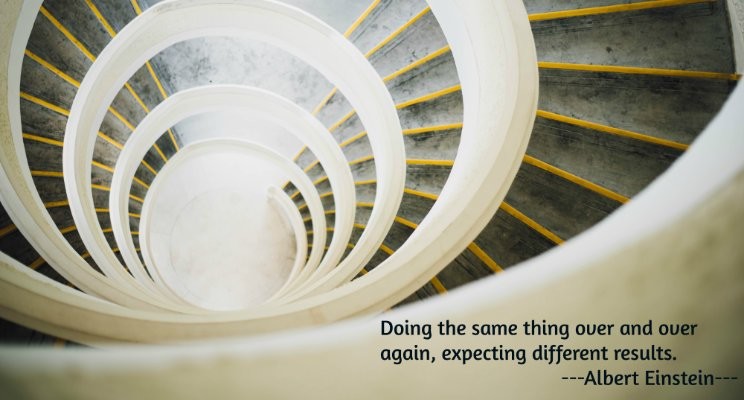Many articles address, in general terms, how to build and manage a high-performing team. Unfortunately, they all make assumptions about the Leader’s (or Project Manager’s) authority to control the budget, select resources, re-prioritize competing project work, and so on. In everyday project management, these are things the PM typically has no control over. So, how does a PM develop a high-performing team when handed a project, resources, deliverables, and deadlines….
I remember one of the first projects I managed for a software company. I was greeted by my manager and my VP one morning saying they had a “great” new project for me. They gave me the rough scope, told me who I was to work with, and when it had to be delivered (because we promised it to a customer already). And, oh by the way, “we’ve never done anything like this before…you might be hit a few speed bumps, but don’t worry we’ll give you air support.”
Awesome. Speed bumps and air support…on never-before-done software development work.
A baseball coach once told me that on every play, I’m either catching the ball, covering a base, or backing up the play. At no point should I be on the field, “watching baseball”. The more times you can successfully execute a play as a team in a project, the higher the performance of the team. The idea that every player on the team needs to be actively contributing, to every play, to achieve success is a key element in the Project Coaching Model.
This “great” new project that landed on my desk 12 years ago, became one of the highest performing project teams that I’d been a part of. Why? After spending years trying to replicate it with each project since I’ve come up with 5 techniques that each project team needs to maximize performance:
Clear Primary AND Secondary Roles: In my project example, the team was made of a number of technical people that had very specific job functions (software engineers, integration engineers, infrastructure, etc.) and each team member had to consume something from the other team members, incorporate it with something of their own, and then hand it off it to the next person. So each person had to consider, contribute to, and respond to all the inputs and outputs from the larger team to complete the design. There was no one on the team that could be “watching baseball”. If they were, they could have missed a detail, caused an error, that would have affected the outcome. As the PM, you should have this conversation with your team members on a lower level. What are their steps when their teammate is doing step X? They probably know, they just need to articulate it to the rest of the project team.
Communication: We didn’t just hit speed bumps in this trailblazing project…we hit brick walls and bank vaults. Things we couldn’t easily move through or around. We had to scale them. Communication was key and it had to be done quickly and efficiently. Just as the Coach is on the sideline during a game, so is the PM. The team has to communicate with each other on each play for success. As the PM you don’t need to be part of every single message or conversation. If your team finds it more efficient to hand signals, enable it, and have someone decode the outcome for you.
Coopetition not Competition: The concept of coopetition is classic game theory and can be found in parts of the workplace. On a project, everyone wants to be part of a team that makes them a better player, that raises their game, helps them learn something new. Right? Like a Coach, the PM fosters this environment and creates this culture within the team. Remember those speed bumps that quickly turned into brick walls and bank vaults. No single person on the project team knew enough to break through them so rather than placing sole responsibility on a single person, we had team and partner solutions sessions. You don’t need to have a single-player hit a home run late in the game if you play small ball throughout the game. Create opportunities for collaboration. These could be war rooms, sticky note walls, stand-up meetings, split-squad solutions, virtual whiteboards, etc. The medium for collaboration could be as much fun as the competition.
Peer Leadership: In a previous article I spoke about Servant Leadership. All projects teams have at least 1 team member that has earned the respect of their peers. Seek them out. Build a relationship with them, 1:1. Get their input individually when you come across a speed bump. A word of caution here — watch out for the Peer Leader Chameleon. This person, especially early on, appears to look like a peer leader, but they really don’t have the support of their peers and their motives aren’t usually in line with the team goal. In the Project Coaching model, these may be free agents looking to raise their own value or disenfranchised player. Aligning yourself with this person could affect your credibility with your team as well as the overall team performance.
Coaching the Coach: Even the Coach needs coaching. As a PM you need to find ways to continually improve your skills throughout the project cycle, not just at the end. Find a peer or a mentor that is willing to give objective outside feedback. This doesn’t have to be a direct manager. Coaches often share drills and other tools they have picked up with each other. PMs should do the same. Invite your PM mentor to a meeting and tell your team why they are attending the meeting. Attend one of their project meetings. Your team will appreciate the initiative and transparency and will have broadened your perspective.
If you are wondering what happened with that “great” project? The one with speed bumps and air support…on never-before-done software development work? Well, it became the baseline for future project work in that organization and was the foundation for a guide and implementation tool set dubbed “The PM Playbook”.
___________
If you found this article helpful, connect or follow Tiffany Rosik on LinkedIn.
Tiffany Rosik, with TGR Management Consulting, is focused on helping software development companies in the healthcare industry achieve customer success by developing a scalable model to efficiently deploy software, coordinate resources, and manage team communication.




